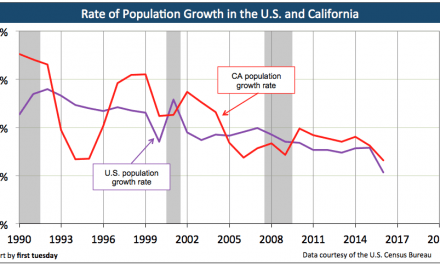35,202 new and resale homes closed escrow in California during July 2010, down 22% from one year ago when 45,079 sales closed escrow. Statewide, sales volume is showing a downward trend in recent months. One factor contributing to the sales decline was buyers taking advantage of the state and federal tax credits through the first quarter of 2010. [For more information on California home sales, see the August 2010 first tuesday market chart, Home sales volume and price peaks.]
Real estate owned (REO) resales accounted for 36% of all resales in July — comparable to 34% in June but down from 43% of all sales one year earlier.
Speculator and investor house buying represented 22% of resales in Southern California (SoCal) and 17% in the Bay Area. The high-tier home market accounted for 39% of resales in SoCal and 34% of Northern California (NorCal) sales, up from 28% and 32% one year earlier.
Federal Housing Administration (FHA)-insured loans represented 36% of SoCal and 23% of Bay Area mortgages recorded in July 2010, down from 39% and 25% one year earlier. These drops in FHA-insured originations are consistent with the fact expensive homes have become a higher percentage of resales. Adjustable rate mortgages (ARMs) provided for 6% of total mortgages in SoCal and 10% of NorCal mortgages. Jumbo loans (mortgages over $417,000) accounted for 18% of SoCal and 36% of Bay Area purchase-assist financing in July.
Cash purchases represented 27% of SoCal and 25% of NorCal sales in July — an indication speculation and flipping are still part of the game.
first tuesday take: Earlier predictions of rising sales volume in high-tier homes and increased investor purchasing are slowly coming to fruition. Total sales took a dip and more high-tier homes are being sold as their prices are dropping fast, in a return to historic price level trends. [For more information regarding past California home sales, see the August 2010 first tuesday article, California home sales data for June 2010.]
July’s data is a reflection of tax credits stealing from one hand to feed another. It worked, but drew on future sales, adding nothing to the long-term market but more chaos. Sales that would have occurred normally in the coming months were preempted by moving buyers forward to take advantage of the subsidy to give a false impression of demand for homes. In hindsight the tax credit subsidy was unnecessary, except to steer buyers to builders and away from the multiple listing service (MLS), and possibly encourage more premature construction in the near future.
The tax credit was meant to bridge the gap created by the recession and bring on a real estate recovery — the only problem being the real estate recovery has not arrived and the tax credits are long gone. Although the tax credits gave the California real estate market a temporary lift, declining employment and increasing mortgage delinquencies in California will continue to trigger a consistent, if not increasing, flow of mortgage defaults. [For more information regarding the federal homebuyer tax credit, see the July 2010 first tuesday article, Plunging pending home sales.]
Most welcomed for long-term stability of the real estate market was the slight decrease in the number of ARMs originated in July. [For more information regarding ARMs, see the March 2010 first tuesday article, The danger of an ARMs build-up.]
Re: “Southern California Home Sales and Median Price Dip in July” from Dataquick













